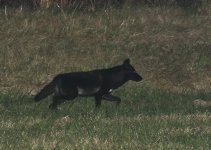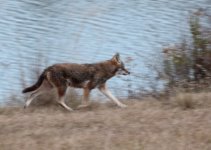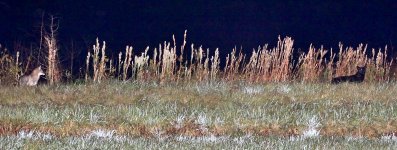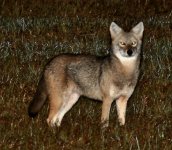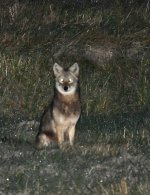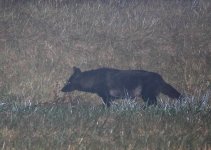- May 9, 2012
- 23,989
- 81,490
- Primary Interest:
- Other
Wow Tom, that's amazing. So glad it ended relatively better than it could have. I have to remark that all who have replied are seemingly so casual about this. What the H are they trapping? No, that's a stupid question, as I am aware of what critters wander in the north woods. Why are they still trapping? Are skins still that valuable? Real curious what financial gains justify this in populated areas.
Having trapped in my youth , there was money in it. More than today for sure. A look at former greatest markets and politics will explain much of the supplies stagnation in places.
That said. When prices dropped and stayed depressed ,the number of trappers declined. Followed quickly by a rise in multiple species of fur bearers.
Your area may well differ but the combination of cleaner farming practices ( eliminating fence/ hedge rows and more efficient harvests) combined with the rise of predators the pheasant population plummeted. As a trapper finding the kill sites in pheasant habitat ( hens caught on nests at night) and the nests missing their egg clutches ,it was no surprise when pheasants became a rare sight.
Raccoons,possum and other critters delight in egg eating( waterfowl not excluded) Nature has her ways and when prey is severely reduced ,predators bear less young .A delay between them ,but like water ,the relationship seeks it' s own level..Usually.
Adaptability matters greatly. Coyote will eat things like cow poop if they must. Little they will not eat.
When rabbits decline ,fox decline when coyotes over lap fox territories ,what happens to the fox is not pleasant when caught.
With coyotes on the rise nationwide more than fox suffer. Predation on deer fawns can be considerable.
We ( humans) affect the evolution of a species wane or decline ,usually for our preference.
Seeking a conservation type management on a holistic level means greater control of the more adaptable predators to enhance greater recruitment ( survival beyond birth for a while) of other species. That does not mean extermination of a species. Even though there were near extermination goals past with coyotes . It only proved their adaptability
A specie well adapted to conflict with humans and others....( entire hound packs dead in minutes, and multiple hunters losing a brace or other number of hounds while hunting.) At least until wolves arrive in their territories where the coyotes face what the fox before them did.
When numbers of a fur bearer are high there is a reason. Fur prices today do not make a trap line worth it to me from,a money perspective . Gas alone would be hard to replace.
Should the trapper on my land remove coyotes , I' ll probably cache a coffee can he can spot with cash to offset his costs.
Amazon Forum Fav 👍
Last edited:



